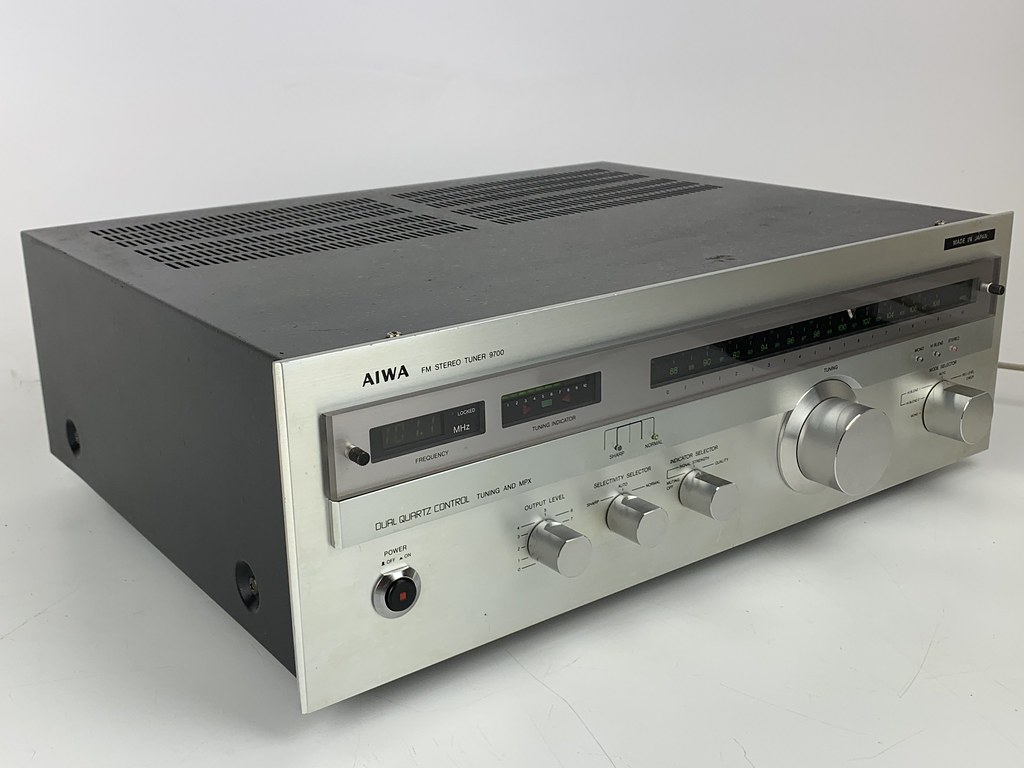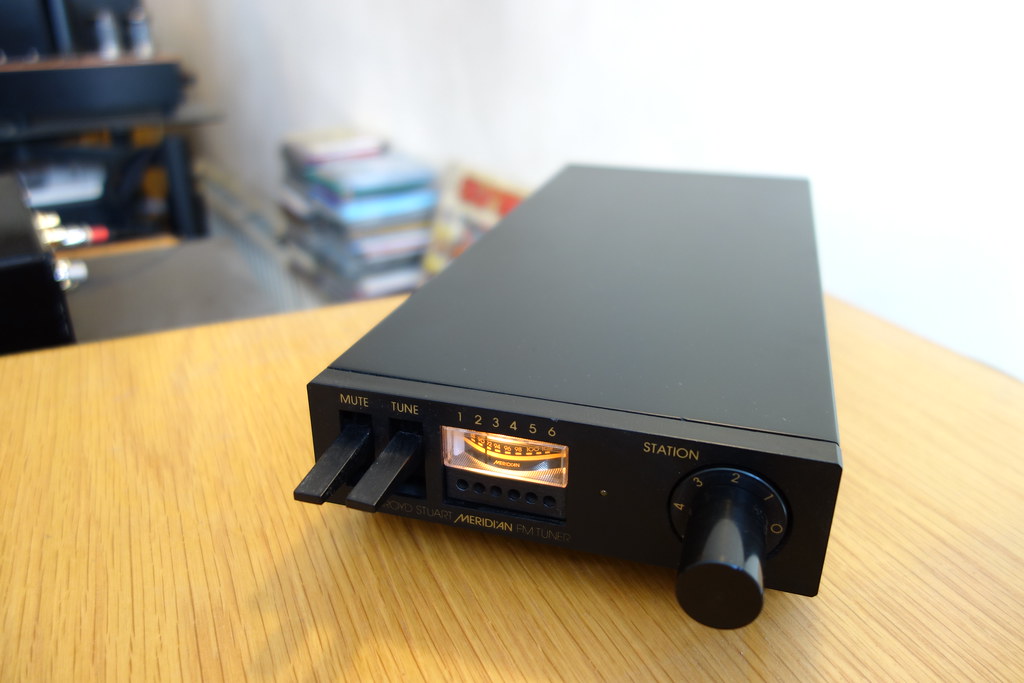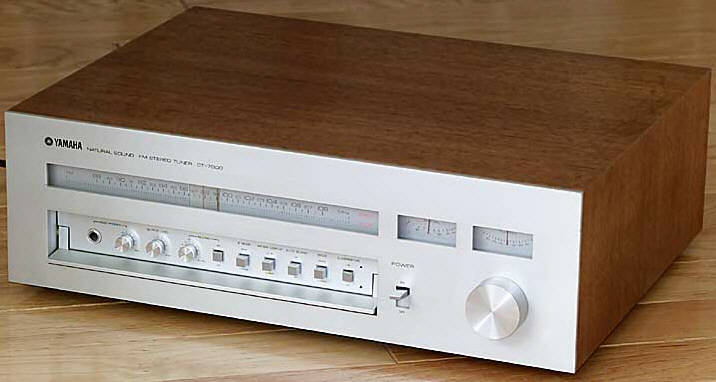Tuners are rarely sought after. Even the best representatives of the species, such as high-end turntables or gigantic open reels, struggle to stir passions. But Aiwa’s AT-9700 was different: it was one of the first tuners with a digital frequency display, and it was super modern in the 1970s sense. This seemed to be the pinnacle of technological excellence in a world of analogue dial tuners. Even today, the Aiwa’s construction is amazing; it contains 10kg of discrete transistors, integrated circuits, FETs and diodes, as well as 63 LEDs! Then there’s the massive mains transformer, which has more case bracing metalwork than a typical oil rig. It’s no surprise that at 45cm across, it barely fits into a normal hi-fi rack.
It is, without a doubt, a well-engineered piece of equipment. For maximum sensitivity, the front end includes a five-gang variable capacitor and two MOSFETs, as well as star earthing for low noise. Its dual-system IF stage has a twelve-pole LC filter for high sensitivity as well as a linear phase ceramic filter for maximum selectivity. These are generally selected automatically, but under challenging reception conditions, users can manually specify the latter by setting the front panel SELECTIVITY control to SHARP. There are also two HI-BLEND options, which are good for busy airwaves but not so good for sound.
Most tuners at the time weren’t particularly enticing, but the Aiwa’s high end was remarkably clear and uncluttered, lacking rivals’ distinctive upper midband coarseness. True, the sound is still a long way behind, say, a Leak Troughline, but it does have other advantages. The AT-9700 can pluck anything you want to listen to out of the ether, unlike many old tuners, which are notoriously insensitive. Its 0.6uV sensitivity makes it the most practical traditional wireless on the market if you live miles from a transmitter or in an FM-unfriendly metropolitan area. The Aiwa is comfortable with a piece of damp string, but it really shines with a nice twig. Its great stereo imaging, good depth perspective, strong confident bass, crisp (if not sweet) treble, and extremely detailed midband will impress when properly set up.
The Aiwa AT-9700 isn’t the most popular tuner on the used market because of its high original selling price, but there are more than you’d think, and most sell for far under £150. They won’t be instant legends like the Leak Troughline or Yamaha CT7000, but they won’t set you back a fortune either.







